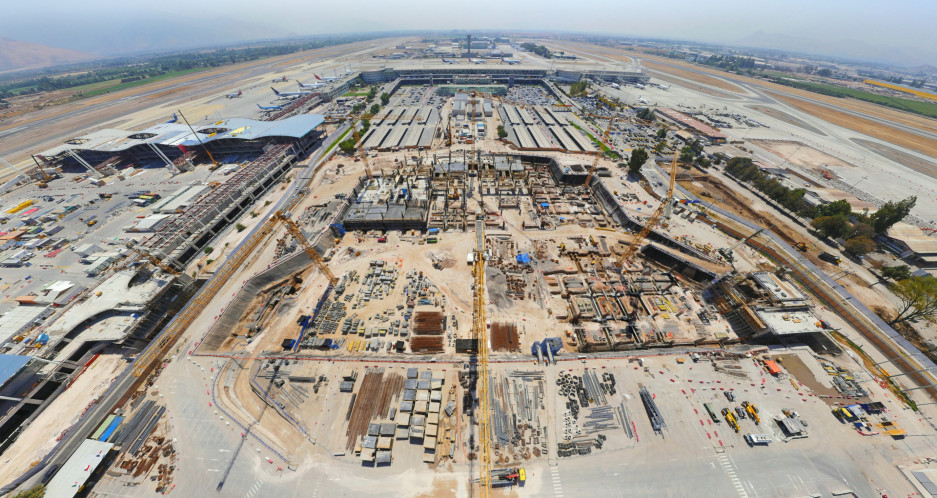
Positive Mobility
eMagSantiago Airport: towards 30 million passengers

Since 2016, major works have been ongoing to build a new terminal at the Santiago International Airport in Chile. Despite the exceptional scale of the project and its long-term vision, work has proceeded without disrupting the passenger experience, in synergy with several entities of the VINCI Group. In Santiago, the future is being built right now.
The clicking sound of metal seat buckles released after landing, passengers making their way to the conveyor belts to pick up their luggage, taking a taxi or public transport into Santiago and, finally, the gradual discovery of this fascinating city shaped by the twists and turns of the Mapocho River, and, off in the distance, the peaks of the Andes mountain range. At first sight, an ordinary, problem-free experience no different from the thousands of arrivals taking place across the world at this same moment, but, in fact, it is this sense of calm that is remarkable, since what is happening here is an extraordinary human and logistical feat. Although it may seem otherwise, Santiago Airport is “under construction” – one might even be tempted to say “under major construction”.
Double the airport’s capacity
Despite outward appearances and the growing passenger flows, the site is in the throes of a radical transformation with the construction of a new international terminal. This large-scale project – VINCI’s largest building project – covers an area of 300,000 sq. metres, including 200,000 for the new terminal alone. In 2016, Santiago Airport welcomed 19 million passengers. In just four years, the works under way will double the airport’s capacity. And yet, planes continue to land and take off, passengers continue to embark and disembark. The airport maintains the same level of activity while also preparing for the flows of tomorrow.
A “low-cost” take-off
This efficiency reflects the method chosen by the joint venture set up by VINCI Airports and its partners Aéroports de Paris and Italian construction group Astaldi, working in close synergy with VINCI Construction Grands Projets. To coordinate all the phases of this complex project, from design to monitoring the works, the teams rely on Building Information Modelling (BIM), a 3D modelling and life-cycle management tool. By bringing together all the design and engineering data, it makes the same information available to everyone involved and enables comprehensive management of every aspect of very large-scale worksites. It has been successfully used on projects as varied as the construction by VINCI of the Fondation Louis Vuitton building in Paris and the Atlantic Bridge in Panama. As in all its projects, VINCI Airports engaged in continuous dialogue with the public authorities to best meet their expectations while taking on board regional development issues and the particularities of the site. Thanks to this sharing of data and very close coordination, Santiago Airport can continue normal operations while laying the groundwork for its future activity. Soon, it will be able to offer passengers 67 boarding gates and 70 new self-service check-in points, twice as many parking spaces, Wi-Fi access and play areas for children. It will also bolster its central role in the momentum and growth of the Chilean economy: on top of higher passenger flows, the new terminal will also provide over 1,900 sq. metres of commercial space. Passengers will be able to enjoy the new facilities from 2020.
The transformations that are currently taking place will make the airport one of the most advanced in terms of infrastructure and service quality.”